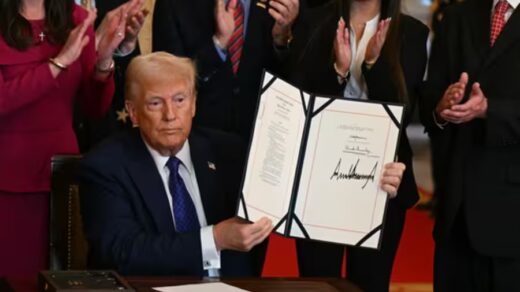
One of the Founding Fathers, Alexander Hamilton, stated this of the electoral college when it was originally established, “if the manner of it be not perfect, it is at least excellent.” 236 years later, 63% of Americans would disagree, and with good reason; in fact, it is a heavily flawed system which cannot only be reformed but must be replaced altogether with popular vote.
The argument underpinning the case for the electoral college is centered around the fact that it raises the number of votes which politicians can earn in sparsely populated areas; for example, 193,000 people would account for one vote in Wyoming, whereas this would be 700,000 in California or Texas. Advocates for this system thus conclude that it would incentivise politicians to pander to these regions, instead of focusing on metropolitan areas, where campaigning would lead to more votes. However, the electoral college fails to solve this problem. Rural districts, which have low population densities, are overwhelmingly conservative (87% voted Republican for the 2018 midterm elections), since many feel ignored by Democrats, who are perceived to protect minorities (who live in urban areas) instead. Therefore, neither party campaigns in these areas because Republicans believe they will win anyway, and Democrats believe they will lose. If not even the paramount argument in favour of the electoral college holds water, it is already difficult to understand why America should keep using this voting procedure.
Moreover, the system has numerous drawbacks, and although some of these are not inherent to the system, they strengthen the case for its abolition. Thirty states allow electors to completely reverse the results of the populace’s vote or to abstain from voting. Although this has only happened 156 times and has never affected the outcome of an election, the shrinking margins by which presidents are chosen render such differences increasingly important. Some states also penalize ‘faithless electors’, but often inefficaciously; for instance, three electors in Washington received meagre $1,000 fines for casting ballots for Colin Powell in the 2016 election, despite the public’s support for Hillary Clinton. Giving electors this privilege may have made sense in 1787, when many Americans lacked the most basic knowledge about presidential candidates and their policies and hence were unable to make informed decisions, but it is now outdated and profoundly anti-democratic.
A second criticism of the electoral college is that votes could be distributed to each state inaccurately. Population data is typically unreliable because it is determined by the census, which not only tends to be recorded after elections, but is only measured once every ten years. Moreover, the government is typically inadept at creating precise estimates; according to the Pew Research Centre, the 2020 survey overcounted the population in eight states, sometimes by as much as 5%, and undercounted it in six. This allocation of votes is also misguided because it is based off the total population within the states, not the number of eligible voters. And although these may seem like small discrepancies individually, they might cumulatively give a disproportionate amount of power to a certain state. Replacing such a system with the popular vote would eliminate such disparities, since the number of people who turn out to vote would be certain.
It is also ironic how advocates for the electoral college wish to give smaller states more power over the result of the election, but this ends up in the hands of swing states (those with a sizeable unaffiliated bloc), for the same reason that they do not campaign in ‘safe states’. In the 2012 election, both Barack Obama and Mitt Romney only made stops in ten states and spent two-thirds of their time in four relatively large ones (Florida, Iowa, Ohio, and Virginia). Furthermore, these proponents undermine the notion of democracy in their own argumentation; they argue that since these voters know that they will decide the election, they are more likely to conduct research and therefore they deserve this extra leverage. By that logic, we should have the most educated technocrats deciding the fate of the election, not the people.
However, the electoral college’s most pivotal flaw is that it violates the principle of ‘one man, one vote’, which undermines the tenet of equality in a democracy. In 2016, Trump won a resounding electoral college victory, with the backing of 304 electors compared to Clinton’s 227 but lost to her by 2.8 million votes. This is because a higher turnout decreases the significance of each vote since there are a fixed number of seats; in 2020, a 52% in turnout in Oklahoma made a vote in that state 37% more important than in Oregon, which had a turnout of two-thirds. Granted, only five presidents have won the electoral college without the popular vote, but this is five times too many. It also erodes trust in democracy, since certain groups would believe that their votes would not count, particularly in large states; there is a reason why turnout in America is a mere 58.4%.
Supporters of this procedure do have one valid argument; that an electoral college victory is usually larger than that of the popular vote, which leads to more certainty about the outcome and leads to less resources spent on recounts. However, such a marginal cost should not upend the principle on which the vanguard of the free world was founded.
Written by Sean Tan


